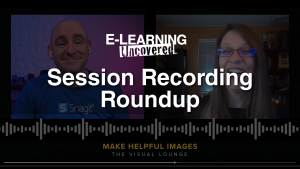What I Have Learned About VR and Adobe Captivate
While working on the upcoming release of our Adobe Captivate 2019 book, I have put a considerable amount of time looking into 360° photography. More to the point, I have been looking at options for stock imagery and videos in the 360° or equirectangular form. Then it hit me, “is stock photography the right choice for VR?”
Creating Immersive Experiences
Adobe Captivate 2019 was the first e Learning development tool to promote VR as a mainstream feature. No plugins or coding required. Just import a 360° image or video and you are ready to start creating an immersive experience. Add text captions, traditional images, interactive hotspots, and quizzes all without ever leaving the Captivate interface. Sounds great right? Well it is, but why would you want to use VR in the first place?
Big Beautiful Images
As a designer, I try to incorporate big beautiful images into my work, especially presentations and e Learning courses. Nothing grabs your attention like good photography and stock photography makes it readily available. Plus, you can step outside of the box and use images that at first may seem random or abstract. As the story unfolds, those “random” images begin to make sense and have a much bigger impact on the audience than imagery that is more literal. Now if I can make that big of an impression with a two dimensional image, consider the impact that 360 degrees of big beautiful photography can make?
So there I was, looking for equirectangular images (tech speak for 360° images) that I could use in my course. I had my designer’s super suit on and was considering images that were more conceptual than literal. Why not? It has always served me well in other presentations. Then I tried to tie these images back into the topic at hand. I had a much more difficult time in doing so. In fact, I found that I could not. How could this amazing new media format be so cruel? I felt as though I had been stripped of my super suit.
A New Hope
I found some really interesting content but nothing seemed to fit and that is when I began questioning why would someone want to use VR in an e-Learning course?
Because they are teaching a tangible topic that in all likelihood would be too expensive or too hazardous to be taught “in-person.” This type of presentation is rarely, if ever, going to be conceptual. That is why I could not effectively use 360° images in my VR project that were not literal. Now this is not to say that you cannot get creative with your VR projects, but you are going to have a much more difficult time doing so with stock 360° imagery.
But there is hope my friends. As 360 imagery and video is gaining in popularity, more photographers are adding it to their repertoire. So that means that more of it will become available on stock imagery sites. It also means that there will be a better market for hiring photographers to capture images specific to your VR needs.
Want to Try VR for Yourself?
If you are an Adobe Captivate user and have never tried VR, then take a look at this quick tutorial video. In it you will learn some valuable tips and tricks of adding VR to Adobe Captivate.

 Previous Post
Previous Post Next Post
Next Post



